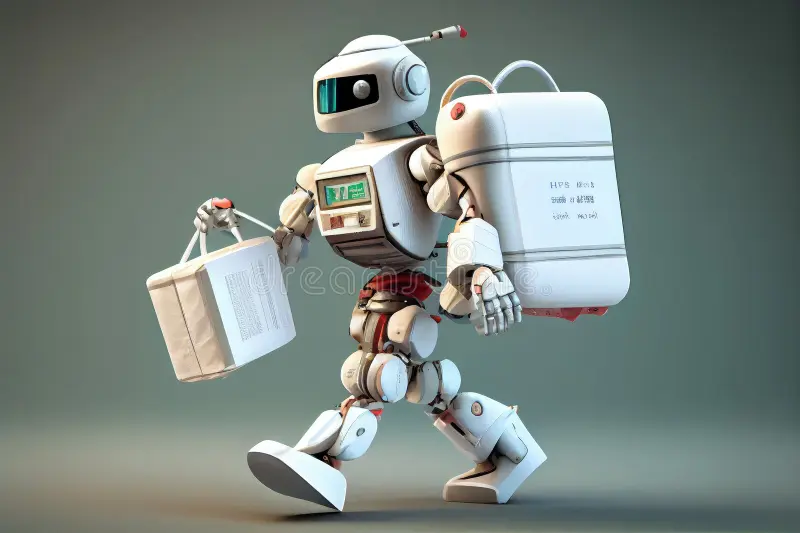During critical medical emergencies, response time, accuracy, and efficiency can mean the difference between life and death. Traditional emergency medical services (EMS) often face delays due to traffic, human limitations, and logistical challenges. AI and robotics are emerging as game-changing solutions, enhancing real-time decision-making, automation, and rapid medical intervention in crisis situations.
How AI and Robotics Are Revolutionizing Emergency Medical Response
1. AI-Powered Emergency Dispatch Systems
- AI-driven algorithms analyze emergency calls, filtering urgent cases faster than human operators.
- Natural Language Processing (NLP) detects distress in voices and keywords to prioritize high-risk incidents.
- Example: Corti, an AI system, assists dispatchers in detecting cardiac arrest cases in real-time.
2. Autonomous Drones for Medical Supply Delivery
- AI-powered drones bypass traffic and geographical barriers, delivering first-aid kits, AEDs, and blood within minutes.
- GPS-guided navigation and real-time AI analytics ensure rapid, precise deliveries.
- Example: Zipline’s medical drones deliver life-saving blood supplies to remote hospitals.
3. Robotic First Responders for High-Risk Environments
- AI-powered robotic paramedics enter hazardous zones, collapsed buildings, or disaster sites to assess victims.
- Robots equipped with sensors and thermal imaging locate survivors in debris.
- Example: Boston Dynamics’ Spot robot assists in disaster zones by scanning for survivors.
4. AI-Driven Ambulances for Faster and Smarter Care
- AI-integrated ambulances predict the best routes, traffic patterns, and hospital availability for optimal transport.
- Smart monitoring systems track patient vitals, sending real-time data to hospitals before arrival.
- Example: AI-driven ambulances in Dubai use machine learning to optimize emergency response routes.
5. Telemedicine and AI for Remote Diagnosis During Emergencies
- AI-powered virtual assistants analyze symptoms in real-time, guiding paramedics with accurate diagnostics.
- Telemedicine-equipped drones and robots connect remote patients with doctors for emergency interventions.
- Example: The Mayo Clinic uses AI-based telemedicine to assist rural emergency cases.
6. AI in Triage and Decision Support Systems
- AI-driven triage algorithms prioritize patients based on injury severity and survival probability.
- Machine learning models analyze historical data to suggest optimal treatment paths.
- Example: Google’s DeepMind is developing AI for early sepsis detection in emergency rooms.
7. Robotic Surgery for Emergency Medical Procedures
- AI-assisted robotic surgeons perform emergency operations remotely via telemedicine.
- High-precision robotic arms stabilize trauma patients before they reach hospitals.
- Example: The Da Vinci Surgical System allows doctors to operate on patients from miles away.
Real-World Applications of AI and Robotics in Emergency Response
1. Disaster Relief and Search-and-Rescue Operations
- AI drones map disaster zones, locating survivors in earthquakes, floods, and war zones.
- Robots deliver aid, clear debris, and communicate with trapped individuals.
2. AI-Powered Predictive Analytics for Emergency Preparedness
- AI analyzes weather patterns, social media, and past disaster data to predict future emergencies.
- Hospitals use AI models to allocate resources based on real-time emergency case trends.
3. AI Chatbots and Virtual Assistants for Emergency Guidance
- Chatbots provide step-by-step CPR instructions or guide bystanders in stabilizing victims.
- AI-based voice assistants detect strokes, seizures, or abnormal breathing from phone calls.
Advantages of AI and Robotics in Emergency Medical Response
1. Faster Response Time
- AI-driven dispatch and robotic responders reach patients quicker than human paramedics.
- Autonomous drones and AI ambulances cut transport delays significantly.
2. Enhanced Accuracy and Predictive Decision-Making
- AI-powered diagnostics minimize human error, ensuring the right treatment at the right time.
- Predictive analytics anticipate patient deterioration and alert medical teams in advance.
3. Reduced Risk to Human Responders
- Robots enter dangerous environments, protecting human first responders from toxic exposure, fires, and collapsed structures.
- AI systems minimize manual workload, allowing paramedics to focus on critical care.
4. Global Accessibility and Remote Medical Assistance
- AI and robotics extend emergency care to remote, disaster-prone, or war-torn regions.
- Telemedicine-equipped drones bring expert medical help to patients in isolated areas.
Challenges and Limitations of AI and Robotics in Emergency Care
1. Ethical and Legal Issues
- AI-driven medical decisions raise concerns about liability, accuracy, and patient rights.
- Regulations must address AI’s role in life-or-death medical interventions.
2. High Implementation Costs
- Advanced AI systems and robotic responders require significant investment in infrastructure and technology.
- Many low-income regions may struggle to integrate AI into emergency healthcare.
3. Reliability and System Failures
- AI models depend on high-quality data; biases or technical failures can lead to misdiagnoses.
- Cybersecurity risks could make AI-driven EMS vulnerable to hacking.
The Future of AI and Robotics in Emergency Medical Response
- AI-powered autonomous ambulances will become standard in urban emergency response.
- 5G-enabled telemedicine drones will provide remote medical care worldwide.
- Brain-computer interface (BCI) systems will allow AI to detect strokes and heart attacks in real time.
- Advanced robotic paramedics will assist human doctors in field surgeries.
AI and robotics are set to redefine emergency medical response, making it faster, safer, and more precise. As technology advances, we can expect a future where AI-driven systems save lives with unparalleled efficiency and accuracy.
From Our Editorial Team
Our Editorial team comprises of over 15 highly motivated bunch of individuals, who work tirelessly to get the most sought after curated content for our subscribers.


